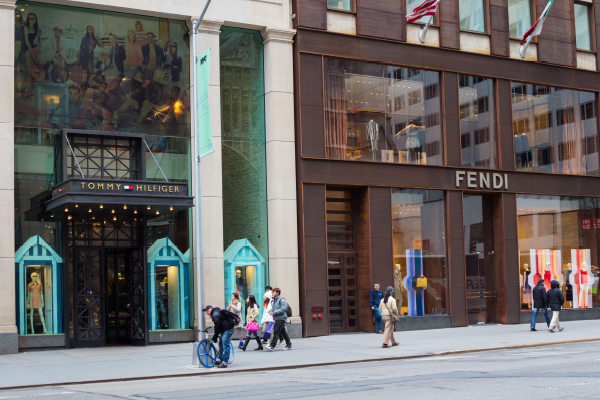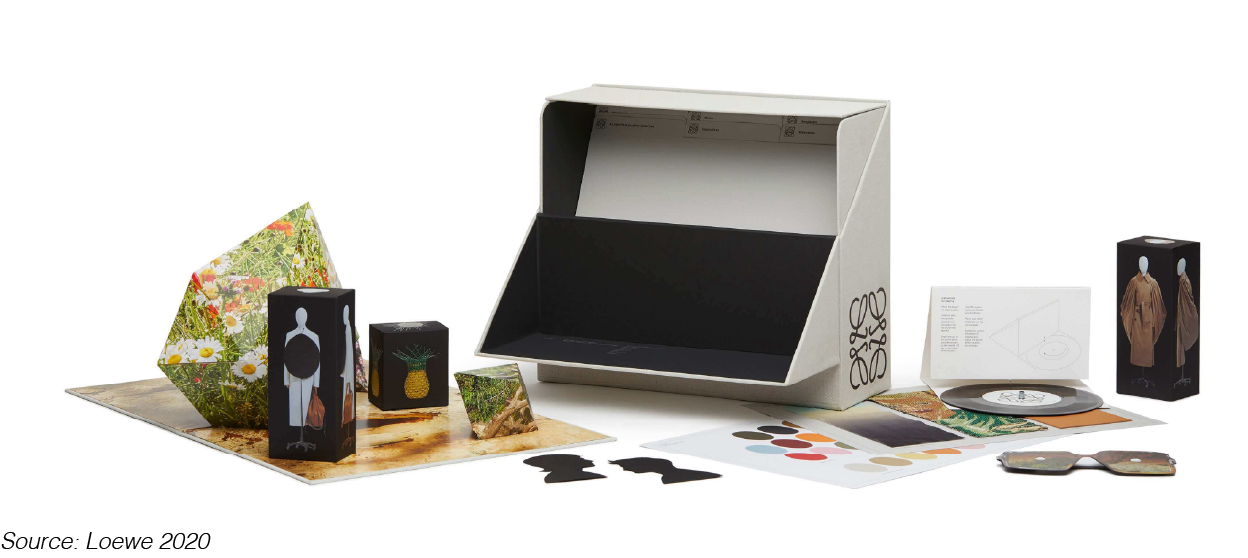Fashion has basically been a brick-and-mortar business, but the pandemic has changed the landscape by pushing consumers toward online shopping. Fashion retailers have responded by building and strengthening their e-commerce presence.
That’s a good start.
Keeping customers, however, calls for a paradigm shift in fashion marketing and retail strategies.
The latest GEP analysis, Category Trends: The Future of Fashion Marketing, examines the challenges and opportunities for fashion retailers in the new landscape as brands adopt the digital-first approach. It also analyzes omnichannel fashion marketing strategies that have paid off.
A must-read for category managers and marketers who want to retain and engage customers and succeed in the digital space.
What’s Inside:
- The rise of fashion e-commerce
- Marketing strategies to enhance the digital buying experience
- The importance of right messaging
A must-read for category managers and marketers who want to retain and engage customers and succeed in the digital space.
The fashion industry is characterized by constant disruption and rapid changes in the marketing landscape. The latest and perhaps the greatest disruptor is the COVID-19 pandemic, especially for brands with a primarily brick-and-mortar presence. Brands that were market leaders five months ago are now struggling to keep their doors open, and some have even filed for bankruptcy — Neiman Marcus, J.Crew and Brooks Brothers, to name a few.
Historically, brick-and-mortar has been the highest grossing retail channel for the fashion industry. Despite the growing popularity of e-commerce, in fashion, it has recorded only 12% of total sales over the past decade.1 With consumers preferring the brick-and-mortar fashion experience, online sales currently contribute a minimal portion of the total gross revenue of the fashion industry. That said, fashion e-commerce, one of the largest B2C industry market segments, ranked eighth with a reported market size of $528 billion in 2019.

Now, these numbers are set to rise, with the pandemic pushing all retail online. It has catalyzed the shift to online shopping, and brands have had to respond by accelerating digital and omnichannel adoption, particularly those that did not have a digital-driven strategy in place. Earlier this year, a Forbes report stated that the pandemic would hasten the shift to digital — it expects online retail to surge by 30% of all sales by 2025 versus 12% reported in 2019.2
NOTE: Includes products or services ordered using the internet, regardless of the method of payment or fulfillment; excludes travel and event tickets, payment such as bill pay, taxes or money transfers, food services and drinking place sales, gambling and other vice good sales Source: eMarketer, May 2020 (US E-commerce by Category 2020: How the Pandemic Is Reshaping the Product Category Landscape)
NOTE: excludes travel and event tickets, payments such as bill pay, taxes or money transfers, food services and drinking place Source: eMarketer, May 2020 (US E-commerce by Category 2020: How the Pandemic Is Reshaping the Product Category Landscape)
How can retailers recreate the rich brick-and-mortar customer experience on the web? This is perhaps the most challenging question for fashion marketers. After all, what could be more riveting to a fashionista than strolling into the stores on Fifth Avenue or Oxford Street to browse her favorite designer's latest collection? When the in-person shopping experience has been one of the most important touchpoints for retail brands, how can they ensure their customers can fulfil their fashion needs online, while driving continuous revenue into their businesses?
Many brands are seeing the sudden surge in e-commerce traffic as an opportunity to develop innovative marketing strategies to engage and retain these consumers.
Creating Innovative Online Experiences
Take the case of Lululemon, which is now augmenting its buyers' digital experience by offering virtual fitness classes for yoga, pilates, and strength and conditioning, all hosted by its brand ambassadors.3 This strategy has made it easier for the athletic apparel retailer to take its brand out of brick-and-mortar stores and into consumer homes. A savvy marketer could even argue that this move is a test run for the Canadian retailer's in-home fitness capabilities, a new market it has been trying to enter, starting with the acquisition of home fitness startup Mirror earlier this year. Investors have rewarded Lululemon, driving its stock to an all-time high, even as its competitors' share prices continue to flounder.
Lululemon stock is up 43% YTD, outperforming the overall stock market by 39% and showing a clear bounce-back and run-up in stock price since the initial crash. Source: Google Finance Oct 7, 2020
Nordstrom Inc stock is down 68% YTD. It has not seen a recovery from the initial price crash compared to Lululemon and other competitors with strong digital offerings. Source: Google Finance, Oct 7, 2020
Selfridges, for instance, has also kept its consumers excited about the online fashion experience with innovative tactics. The high-end U.K. department store chain has been featuring up-and-coming designers at the risk of slower sales compared to big-name brands, or becoming overly niche. This allows the store to feature fresh, unique looks to buy and wear, a lure for Gen Z consumers, who have been found to have greater interest in up-and-coming designers compared to other generations. The risk has paid off: Selfridges doubled its online sales during the lockdown, according to a report by Business of Fashion.4
Many fashion retailers are similarly trying to woo their customers, through both innovative and tried-and-tested e-commerce strategies, such as free shipping, live chats, curated styles, online personal shopping, and blog-style fashion content.
Marketing Digital and DTC Channels
Since wholesale is no longer an effective selling channel for designers (in the short term, at least), major brands like Burberry are focusing their marketing efforts on direct-to-consumer channels, which allow for vertical control of their value chain, including branding, pricing and inventory.5
Other retailers, whose focus was marketing their physical stores, are redirecting resources into marketing their digital channels. For example, Montce Swim, an independent swimwear brand with four retail store locations, saw a YoY increase in online traffic of 134%, a 13% increase in online conversion rates, and a 5% boost in email open rates in May 2020.6 After seeing the spike in online traffic, the store decided to repurpose its resources. It has now converted its retail spaces into shipping and handling centers for rapid fulfilment of online orders. As for marketing strategies, Montce is focusing on increasing its Instagram presence through already existing channels, like influencers, where it lets them adopt a DIY approach toward content creation instead of in-person photoshoots.
Getting the Right Message Across
Although brands with strong digital offerings have adapted better to the pandemic, some fast fashion companies have been struggling despite their online presence, owing to COVID-washed marketing. The “we're all in this together” brand messages and ads, while well-intentioned, have backfired, being interpreted by many consumers over social media as insincere.7
In contrast, designer Jonathan Anderson went offline and found a very innovative and powerful way to get his message across — Anderson designed a Loewe Show-in-a-Box to make up for the cancellation of the Loewe fashion show, and delivered it to friends and media.8 The archive box translates the creative process behind the spring 2021 collection into a tangible, sensorial experience, with a pop-up book, 3D cards, a DIY and more, that engages the customer.
We don't necessarily have the perspective to appreciate it just yet, but we are living through a major historical event, and Anderson's Loewe box will probably end up on display in the V&A in a century or so.”
– Business of Fashion on designer Jonathan Anderson's Loewe Show-in-a-Box

The fashion industry is facing tremendous losses in sales and revenue; it's possibly going through its worst crisis ever. But don't let a crisis go to waste. This is also an opportunity to pioneer innovative retail and marketing strategies and lead the way for other retail sectors. It's time to embrace change. Already one of the decade's megatrends in marketing, digital and omnichannel strategies have taken centerstage because of the pandemic. It's a do-or-die situation now: adapt to the new digital world, or perish.
1 “Fashion eCommerce Report 2020,” Statista, September 2020. Retrieved 14 October 2020 from https://www.statista.com/study/38340/ecommerce-report-fashion/
2 “COVID-19 Accelerated E-Commerce Growth ‘4 To 6 Years,'” Forbes, 12 June 2020. Retrieved 14 October 2020 from
3 Lauren Clements, “Virtual Fitness Class Guide,” Lululemon Athletica. Retrieved 14 October 2020 from https://www.lululemon.com.au/en-au/c/community/the-sweatlife/virtual-fitness-classes
4 Zoe Suen, “How the Wholesale Crisis Could Benefit Independent Fashion Brands,” Business of Fashion, 10 July 2020. Retrieved 14 October 2020 from
6 Kaleigh Moore, “As Online Sales Grow During COVID-19, Retailers Like Montce Swim Adapt and Find Success,” 24 June 2020, Forbes. Retrieved 14 October 2020 from https://www.forbes.com/sites/kaleighmoore/2020/06/24/as-online-sales-grow-during-covid-19-retailers-like-montce-swim-adapt-and-find-success/#3fc303d06d78
7 Alexandra Mondalek, “When Pandemic Marketing Goes Too Far: How to Avoid #COVIDwashing,” Business of Fashion, 29 April 2020. Retrieved 14 October 2020 from https://www.businessoffashion.com/articles/professional/when-pandemic-marketing-goes-too-far-how-to-avoid-covidwashing
8 Tim Blanks, “Jonathan Anderson: I Don't Care What the Industry Thinks Anymore,” 13 July 2020. Retrieved 14 October 2020 from https://www.businessoffashion.com/articles/tims-take/loewes-extraordinary-time-capsule

